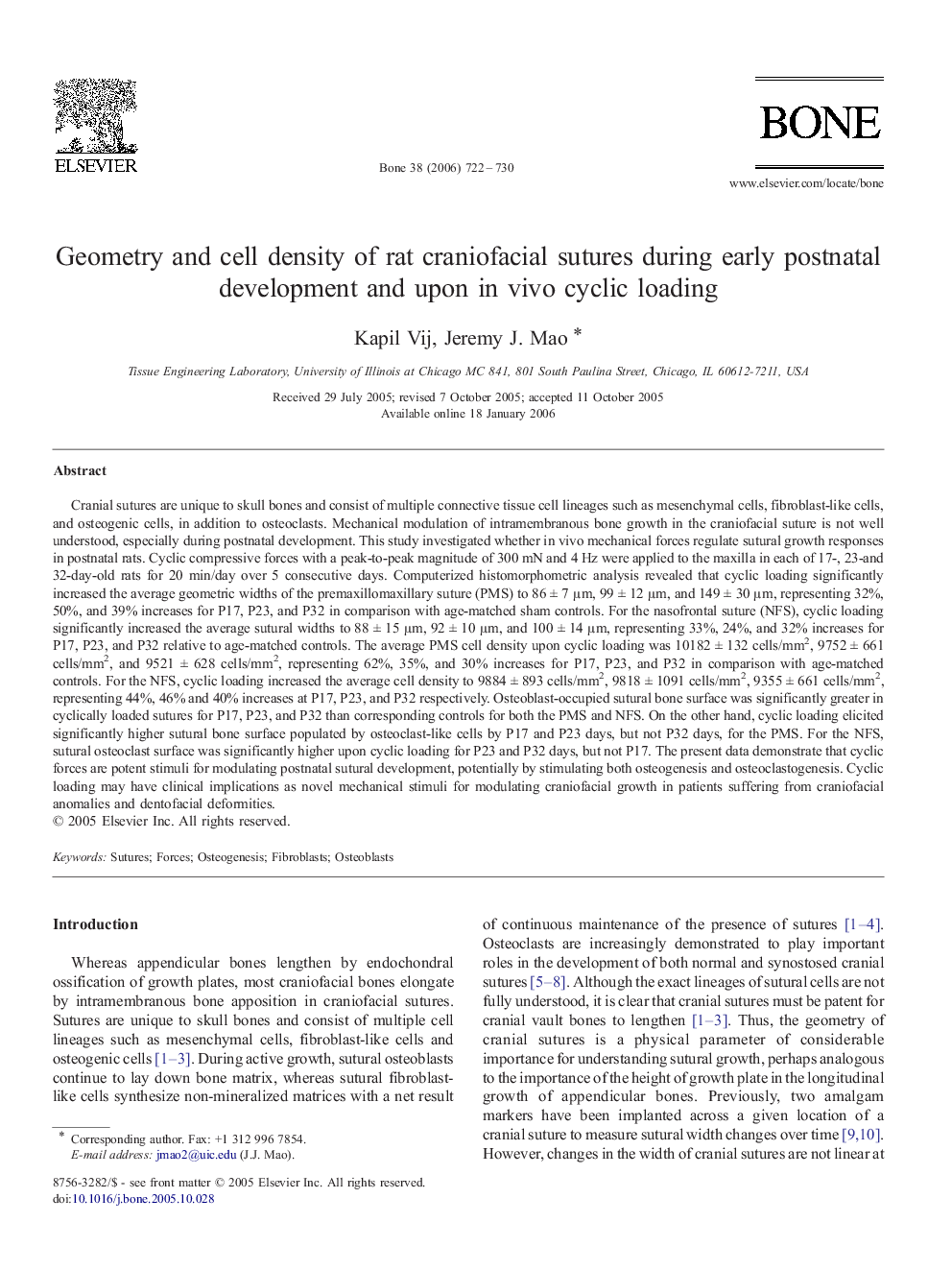| کد مقاله | کد نشریه | سال انتشار | مقاله انگلیسی | نسخه تمام متن |
|---|---|---|---|---|
| 2782658 | 1153356 | 2006 | 9 صفحه PDF | دانلود رایگان |

Cranial sutures are unique to skull bones and consist of multiple connective tissue cell lineages such as mesenchymal cells, fibroblast-like cells, and osteogenic cells, in addition to osteoclasts. Mechanical modulation of intramembranous bone growth in the craniofacial suture is not well understood, especially during postnatal development. This study investigated whether in vivo mechanical forces regulate sutural growth responses in postnatal rats. Cyclic compressive forces with a peak-to-peak magnitude of 300 mN and 4 Hz were applied to the maxilla in each of 17-, 23-and 32-day-old rats for 20 min/day over 5 consecutive days. Computerized histomorphometric analysis revealed that cyclic loading significantly increased the average geometric widths of the premaxillomaxillary suture (PMS) to 86 ± 7 μm, 99 ± 12 μm, and 149 ± 30 μm, representing 32%, 50%, and 39% increases for P17, P23, and P32 in comparison with age-matched sham controls. For the nasofrontal suture (NFS), cyclic loading significantly increased the average sutural widths to 88 ± 15 μm, 92 ± 10 μm, and 100 ± 14 μm, representing 33%, 24%, and 32% increases for P17, P23, and P32 relative to age-matched controls. The average PMS cell density upon cyclic loading was 10182 ± 132 cells/mm2, 9752 ± 661 cells/mm2, and 9521 ± 628 cells/mm2, representing 62%, 35%, and 30% increases for P17, P23, and P32 in comparison with age-matched controls. For the NFS, cyclic loading increased the average cell density to 9884 ± 893 cells/mm2, 9818 ± 1091 cells/mm2, 9355 ± 661 cells/mm2, representing 44%, 46% and 40% increases at P17, P23, and P32 respectively. Osteoblast-occupied sutural bone surface was significantly greater in cyclically loaded sutures for P17, P23, and P32 than corresponding controls for both the PMS and NFS. On the other hand, cyclic loading elicited significantly higher sutural bone surface populated by osteoclast-like cells by P17 and P23 days, but not P32 days, for the PMS. For the NFS, sutural osteoclast surface was significantly higher upon cyclic loading for P23 and P32 days, but not P17. The present data demonstrate that cyclic forces are potent stimuli for modulating postnatal sutural development, potentially by stimulating both osteogenesis and osteoclastogenesis. Cyclic loading may have clinical implications as novel mechanical stimuli for modulating craniofacial growth in patients suffering from craniofacial anomalies and dentofacial deformities.
Journal: Bone - Volume 38, Issue 5, May 2006, Pages 722–730